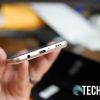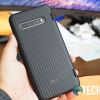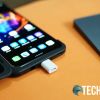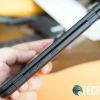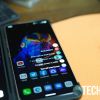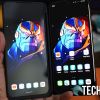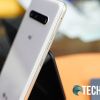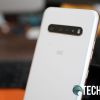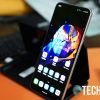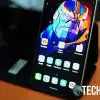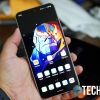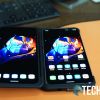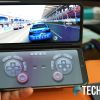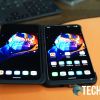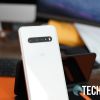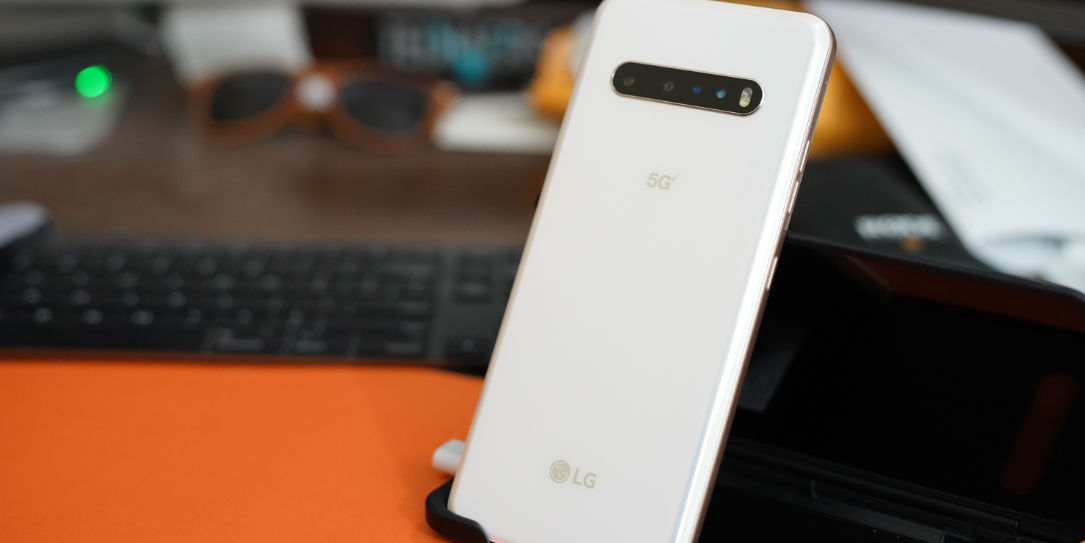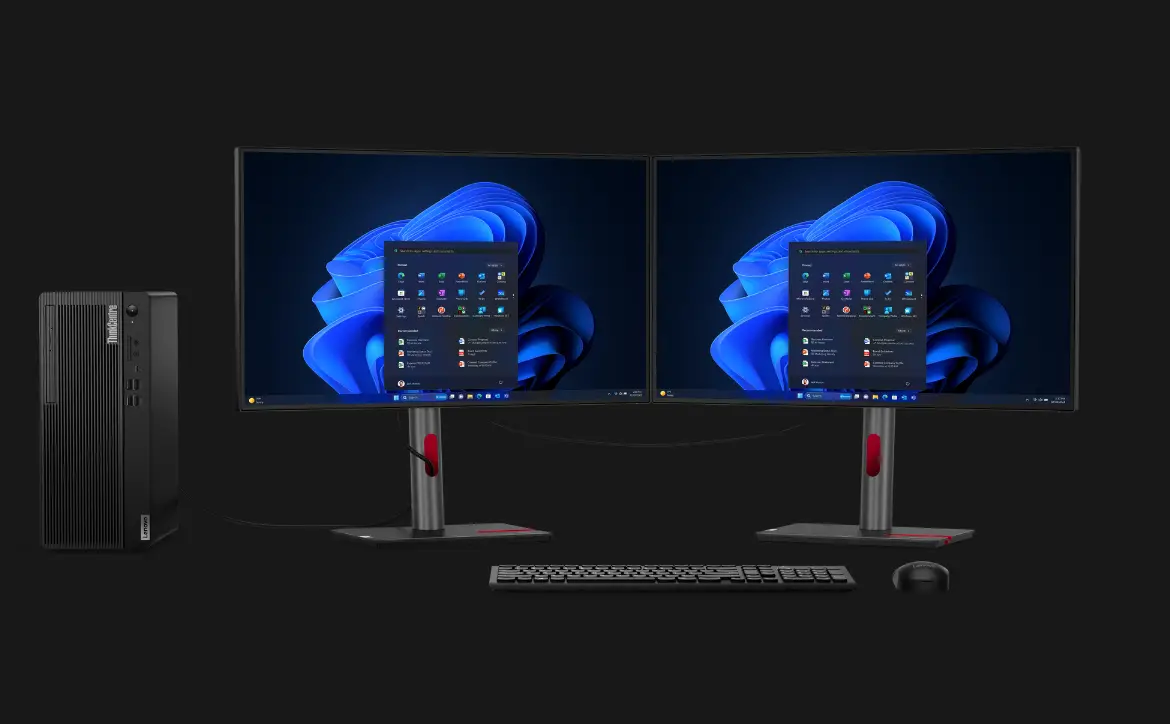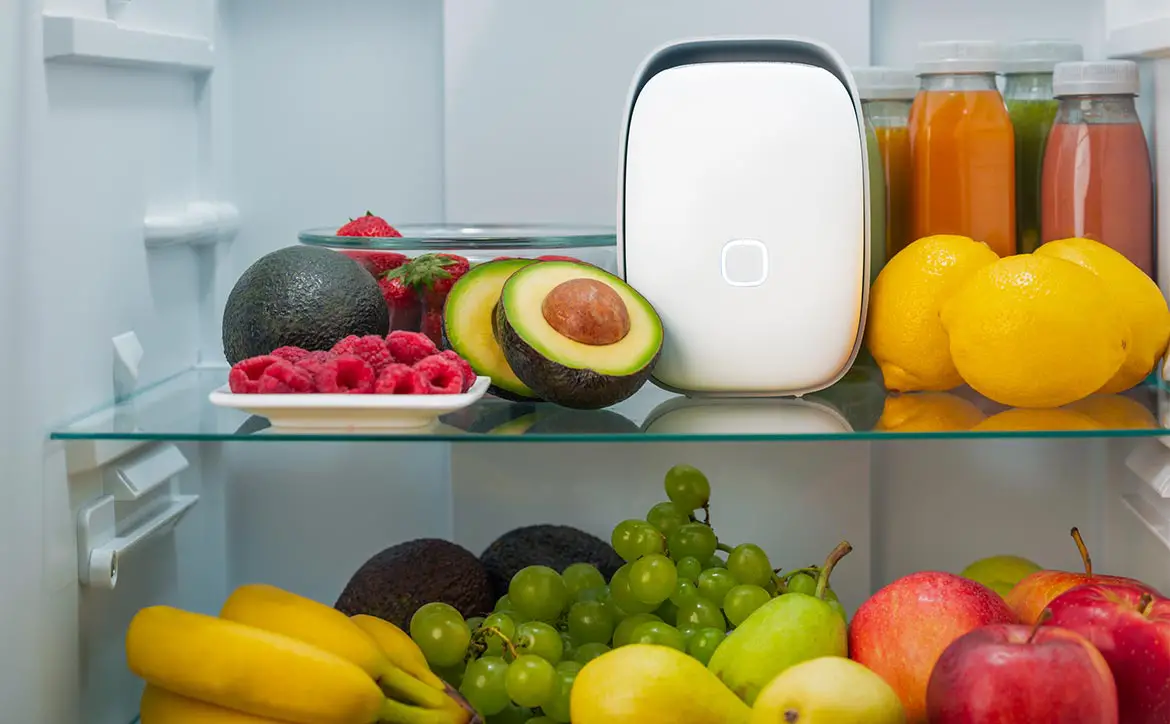
Foldable phones and foldable displays are still in the alpha stages of development for consumers. Devices from Samsung and Motorola have been sold but they’re not perfect yet. So, while we wait for better designs to come to foldable devices, LG is giving us their dual screen devices, like the LG GX8 ThinQ and LG V60 ThinQ 5G.
The LG V60 ThinQ 5G can be purchased alone without a dual screen attached, and that’s a good thing. While the dual screen can be useful for many, some may not find it all that useful. Read on for our full review of the LG V60 ThinQ 5G and let us know in the comments below if you’re a fan of dual screen devices or prefer a single screen.
Specifications
The LG V60 ThinQ 5G has the following features and specifications:
- Operating System: Android 10
- CPU: Qualcomm Snapdragon 865 Octa-core (7 nm+)
- GPU: Adreno 650
- RAM: 8GB
- Storage: 128GB
- Expandable Storage: MicroSD up to 2TB
- Battery: 5,000mAh
- Battery-life: All-day
- Charging: USB Type-C port; wireless charging Qualcomm Quick Charge 4.0+
- Security: In-display fingerprint sensor
- Display(s): 6.8” OLED FHD+ (2460×1080) Cinematic FullVision – Aspect Ratio 20.5:9
- Rear Main Camera(s):
- 64 MP, f/1.8, 27mm (standard), 1/1.72″, 0.8µm, Dual pixel PDAF, OIS
- 13 MP, f/1.9, 12mm (ultrawide), 1/3.4″, 1.0µm
- Z Camera 0.3 MP, TOF 3D, f/1.4, (depth)
- Front Camera: 10 MP f/1.9, 30mm (standard), 1/3.1″, 1.22µm HDR
- Audio: 3.5mm headphone jack with 32-bit/192kHz audio and stereo speakers
- Dimensions: 169.3 x 77.6 x 8.9 mm (6.67 x 3.06 x 0.35 in)
- Weight: 218 g (7.69 oz)
- Front Glass: Gorilla Glass 5
- Rear Glass: Gorilla Glass 6
What’s In The Box
- LG V60 ThinQ 5G
- USB-C charging cable
- USB-C Qualcomm Quick Charge 4.0+ wall wort
- Dual display and magnetic charger if you buy the bundle
- Manuals and Documentation
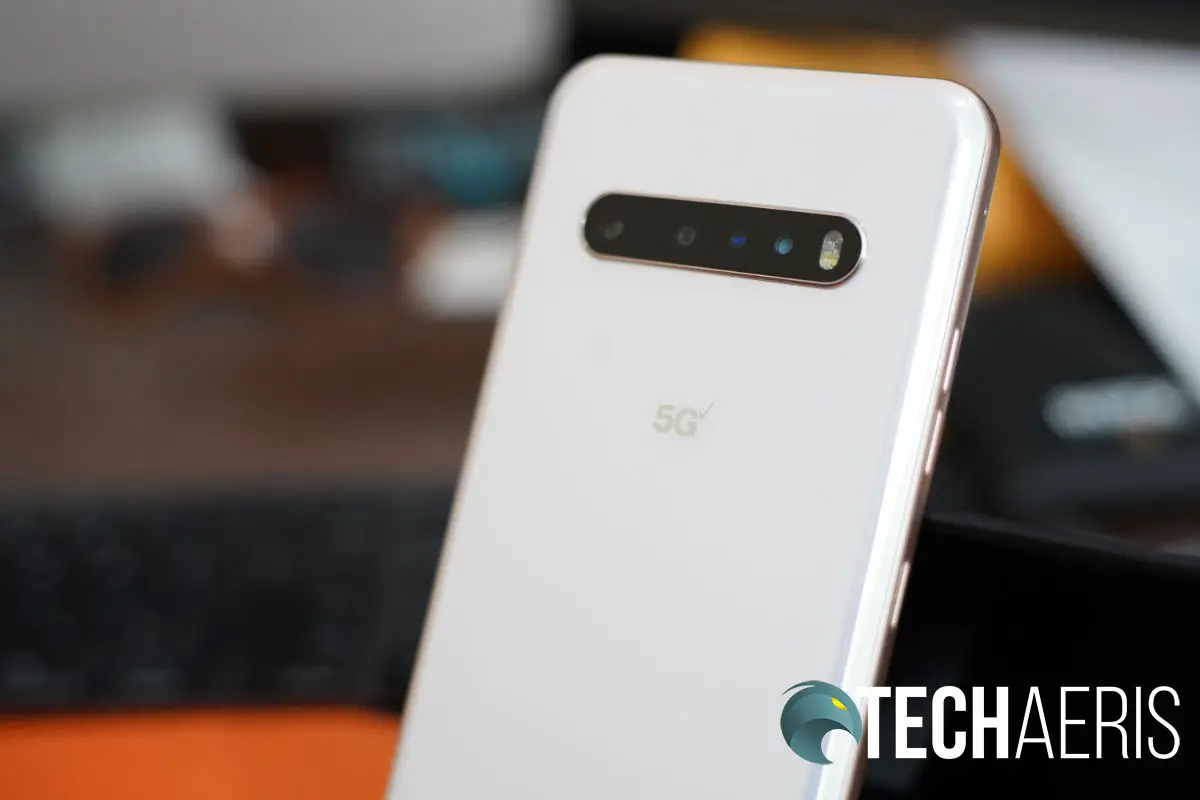
Design
Over the years and across the board, smartphone design has usually been about the same. There’s not much that companies are doing to really distinguish their devices from each other. Most every phone out there is made of glass and aluminum these days, even the budget devices. Most every phone is also candy bar-shaped with bezels that are shrinking. Even Apple is doing this. So the design of the LG V60 ThinQ 5G isn’t that different from others out there.
That being said, like other smartphones, the LG V60 ThinQ 5G has an aspect ratio of 20.5:9. This slightly taller design does make holding the phone much more comfortable. LG also tapered the edges around the back of the V60 ThinQ 5G so they don’t dig into your palm so much, that was surprisingly most welcomed.
All four corners are rounded off, which I also like as it provides less squared corners that can sometimes be uncomfortable in the hand. That’s not to say other phones have square corners, LG just seems to have rounded these corners a bit more than some other brands, and I like it.
The back of the LG V60 ThinQ 5G is made of Gorilla Glass 6 with the front sporting Gorilla Glass 5. The two slabs of glass are held together with an aluminum frame that has a matte finish to it. This is all pretty familiar at this point as most smartphones follow these same parameters.
The power button is along the right side of the phone. It’s in a decent spot but I personally would have liked it slightly lower. The volume rocker, microphone, and Google Assistant button are along the left side of the phone. The volume rocker could have been moved down a bit as well.
Along the top edge of the LG V60 ThinQ 5G are the SIM tray and second microphone. Along the bottom edge of the V60 are the speaker, yet another microphone, USB-C port, and the headphone jack. Yes, you headphone jack lovers will be happy. The headphone jack also features LG’s Quad-DAC (Digital Audio Converter) which should give those using good headphones a better audio experience.
The front of the LG V60 ThinQ 5G, of course, houses that large Gorilla Glass 5 6.8″ FHD+ display, but more on that later. It also has the front-facing camera and the second speaker for stereo sound. Flipping the phone over, the back has Gorilla Glass 6 and, of course, the 3 cameras and dual-LED flash.
The second display also serves as a case which does add a bunch of bulk to the phone. I found that I didn’t like the added bulk so much but it was nice, in some instances, to have that second screen. The case has a magnetic charging port at the bottom and also comes with a magnetic tip to plug your USB-C cable into. The case itself is pretty robust with good drop protection. The hinges are pretty sturdy and look as if they will hold up over time. The screen inside is thin and about the same size as the phone screen. There is also a small display on the mirrored front which gives you info, such as time and weather, at a glance. The design is pretty plain and standard. There’s not much to talk about other than it does add bulk to the phone.
Overall, the LG V60 ThinQ 5G pretty much toes the line of smartphone design. There’s really nothing earth-shattering or out of the norm here and that’s just fine. The V60 ThinQ 5G looks great and, most importantly, it is very comfortable to hold and feels very natural in the hand.
Display
Let’s get one thing out of the way here, there has been some shade thrown at the LG V60 ThinQ 5G for housing an FHD+ display and not a higher resolution display like other flagship devices. I think there’s a bit of smartphone snobbiness going on in this instance. Sure, other flagship devices house higher resolution displays, but we have to consider two things. First, does a resolution higher than FHD+ really matter on a phone display? Second, does having an FHD+ display produce better battery stats?
Like most every other tech reviewer out there, I will always choose the higher resolution screen for myself. I think most of us have become spoiled and we don’t really want to admit that anything more than FHD+ is overkill on a phone display. While I have to say that higher resolution screens have a slight improvement in quality over FHD+, it is not enough that normal users will even notice. Even those devices with higher resolution displays are usually set to FHD+ out of the box and most users never change the setting.
So the 6.8″ FHD+ display in the LG V60 ThinQ 5G is actually pretty darn nice. I honestly felt it was more than enough for my needs and I’m almost positive that most normal users will feel the same.
The next complaint many reviewers had was the notch at the top. It honestly doesn’t bother me in the least. It’s nowhere near as deep or wide as the iPhone’s, and I rarely even noticed it. There’s plenty of room in the notification bar for your notifications. I guess it will just come down to personal taste here.
As the years have gone on, smartphone displays have gotten bigger and the LG V60 ThinQ 5G display clocks in at a healthy 6.8″. You would think the footprint would be massive but it’s really not that much bigger than the iPhone 11 Pro Max. It is obviously taller but the aspect ratio makes it slim and very easy to hold.
As for the looks of the display, this is an OLED display and LG makes its own displays. The company also makes TVs that sell very well, so they know a little about display technology. The LG V60 ThinQ 5G display has vibrant colors and deep blacks which OLED displays are well known for. Out of the box, the colors are saturated and punchy, not really my cup of tea. Thankfully, LG lets you adjust the display in settings. Just jump into settings under display, and then choose screen color. You can choose from the following:
- Auto
- Cinema
- Sports
- Game
- Photos
- Web
- Expert
I ended up using the Web setting as it gave a more neutral and natural look to the display. Expert mode lets you tweak sliders to lock in your preference, just jump in there and play with all of them until you find what you like.
As for the second display in the case, it pretty much mirrors the main screen. It is touch-enabled and it works really well. The colors are vibrant and the blacks are deep. As I said before, LG makes great displays.
Overall, the LG V60 ThinQ has a really great display which I think many reviewers have overly criticized based solely on resolution and flagship stigmas. I think most users will be very happy with the display on the V60 ThinQ.
Software
Android 10 is running on the LG V60 ThinQ 5G out of the box and I really love what Google has done with Android. Dark mode is an option, gestures can be used instead of the standard home, back, and previous apps buttons. Being an iPhone user, I actually like the gesture interface better than the button interface.
All of the standard Android apps and features are here and LG doesn’t add that much more to the mix. There are a few additional apps like LG Health, Music, HD Audio Recorder, and the LG ThinQ app but nothing insane.
One thing I appreciated was the improvement in the user experience and LG’s overlay on Android. While I know the “pure Android” experience elitists will scoff at this, LG’s interface was actually really nice. This was one of the few phones on which I did not feel the need to install a third-party launcher. However, I will say that I think LG and Samsung should allow their default launchers to accept third-party icons from the Play Store.
Overall, Android 10 is smooth on the LG V60 ThinQ 5G and the LG interface is actually a joy to use with some useful options to boot.
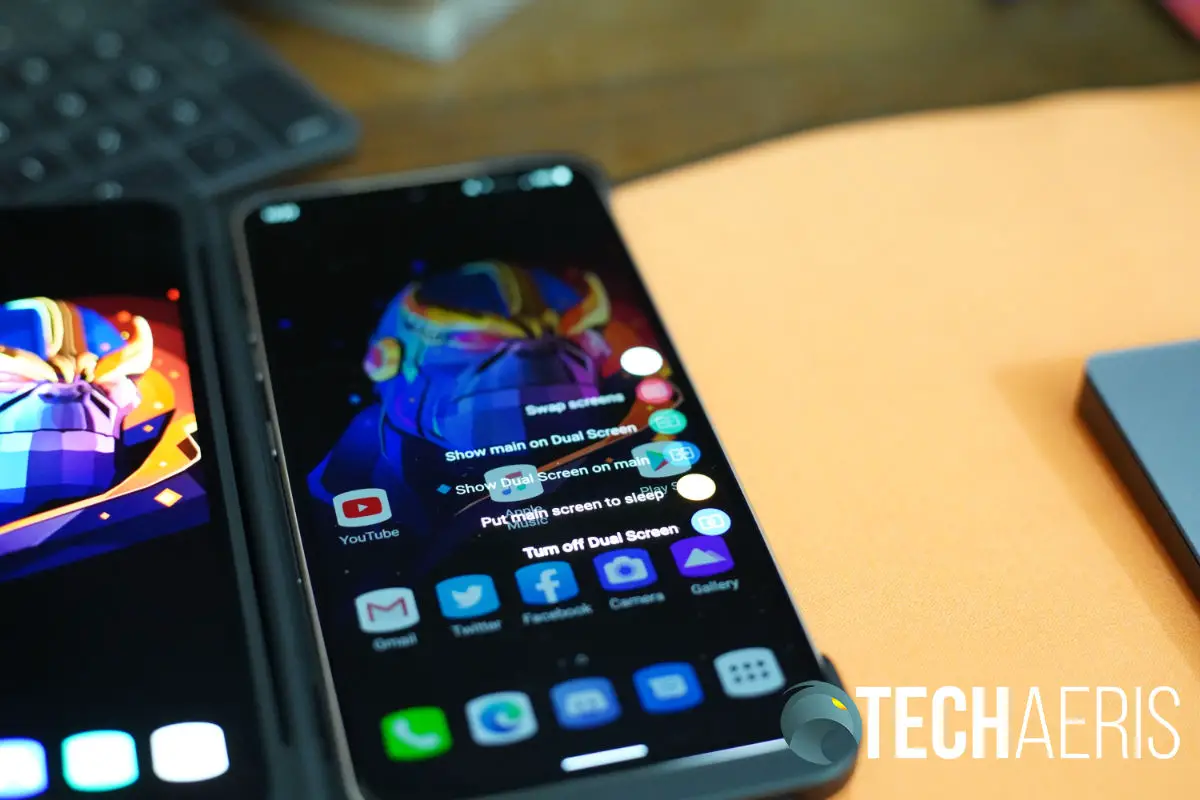
Performance
The LG V60 ThinQ 5G is powered by the Qualcomm Snapdragon 865, Adreno 650, and 8GB of RAM. Storage capacity is 128GB with 99GB being usable. I appreciate LG coming out and saying that 99GB is usable because most brands advertise the 128GB and never talk about the 20-30GB being used by the operating system.
Specifications aren’t everything, but the LG V60 ThinQ 5G has what it takes to get you through a long day of multitasking and heavy use. I had no issues getting through the day doing my normal day-to-day things. This includes web browsing, social media, heavy YouTube use, light gaming, heavy email use, heavy chat, and messaging use, along with photo and video capture.
The V60 ThinQ never missed a beat with scrolling, pinch to zoom, and gestures all working fluidly. The dual screen also performed well with no issues at all. It performed just as well as the main display.
I love racing games and both Asphalt 9 and GRID Autosport had no issues performing well on the V60 ThinQ. Using the dual screen as a controller was amazing, I think the second screen as a controller works best on racing games. I don’t do a whole lot of gaming, but I enjoyed using the screen this way.
Using that second screen for typing was okay. It worked well in split keyboard mode, but I just didn’t find myself using it that much since I like to swipe anyway. But, I can see the benefit of that second screen for those who want a bigger keyboard and more screen to see the emails they’re pecking away at.
Now, let’s talk about 5G. This V60 ThinQ is the Verizon variant, and Verizon has rolled out 5G in the Des Moines area. The problem is, that area is pretty much useless. There are a few pockets of 5G in the downtown area, which is fine if you work there, but everywhere else it’s non-existent. I was able to find a 5G signal in one place, but I had to be in the middle of a busy intersection to test it. Once out of the intersection, 5G would drop out. I was able to catch a red turning light long enough to run a speed test. The speeds are impressive, but the fact that I can’t really use it anywhere but downtown and in small useless pockets makes it, well…useless. That’s 5G.
Overall, the LG V60 ThinQ 5G performed really well, especially given the flagship-level components. I’d say this is flagship performance and that might fly in the face of some reviewers who disagreed. I had no issues, the phone powered through it all. I will reiterate that 5G is useless here in the Des Moines are, for now.
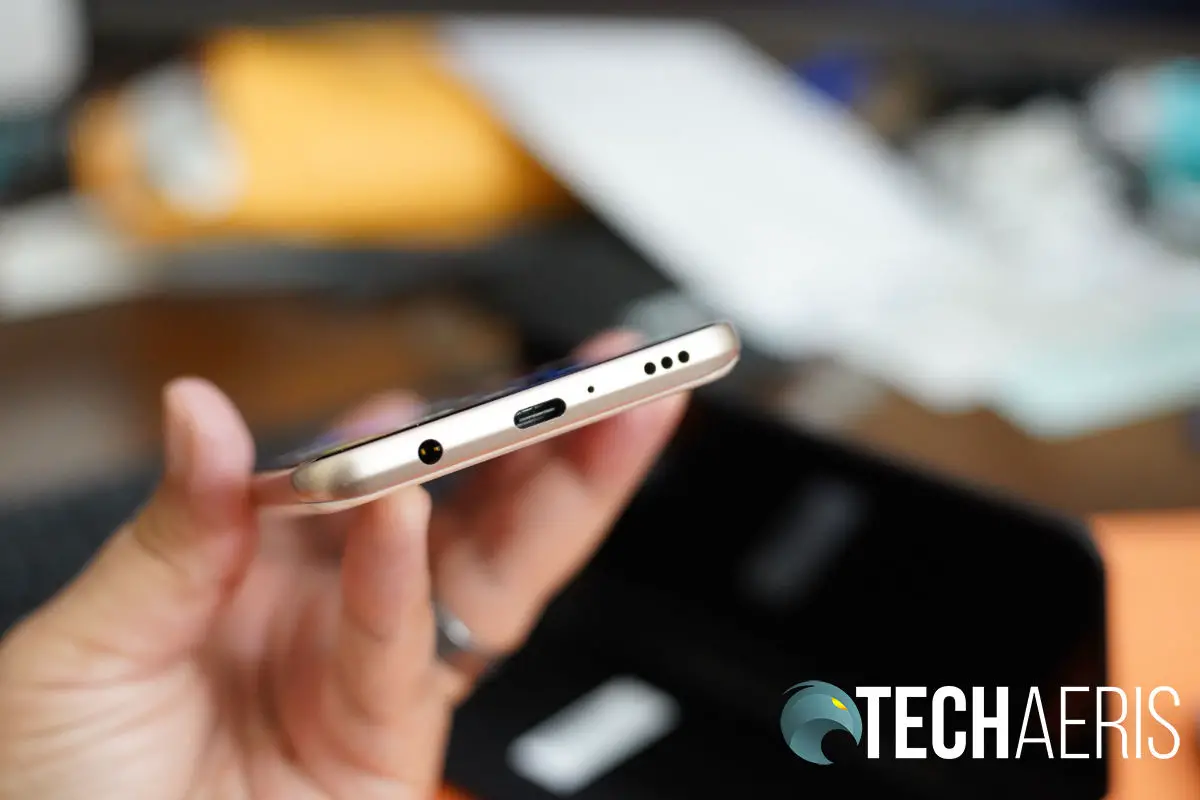
Speakers/Sound
The LG V60 ThinQ 5G does have stereo speakers just as other flagship phones have. Stereo speakers are a huge improvement for any phone and that’s the case here as well. The sound is fairly decent and certainly better than one mono speaker alone. But the sound does lack clarity, especially at higher volumes, and it lacks the punch in the low end.
These are certainly fine for some YouTube consumption, podcasts, phone calls, and gaming, but they’re certainly not immersive. To be fair, most smartphone speakers are going to fall short so this isn’t just an issue with the V60.
For those who love using wired headphones, you should be very happy since the headphone jack is here. Inside that headphone jack is LG’s Quad-DAC which converts the digital audio signal to an analog signal before it hits your ears. This is supposed to deliver better sound and for those using services like Tidal, you should notice the improvement.
Overall, the speakers are decent but they still lack clarity and punch, not unlike the competition. The sound is good and if you’re using wired headphones, the DAC should deliver a much better experience.
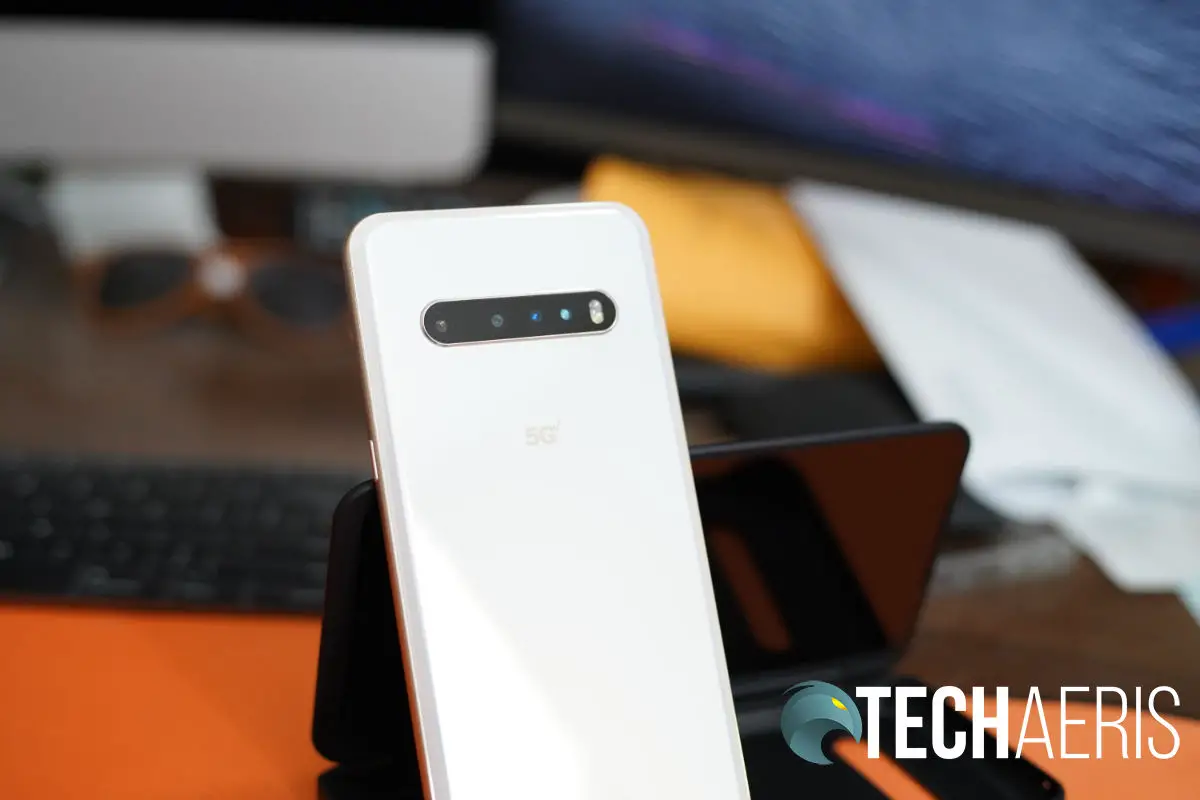
Camera
The LG V60 ThinQ 5G is sporting a 64MP camera as well as a 13MP ultra-wide camera on the rear. The rear also houses the dual-LED flash, and the front camera is a standard 10MP shooter. There is a time-of-flight camera on the rear used for AR and 3D apps you might download and want to use. If you’re not sure what a ToF camera exactly does, check out the quote from Wikipedia below.
A time-of-flight camera (ToF camera) is a range imaging camera system that employs time-of-flight techniques to resolve distance between the camera and the subject for each point of the image, by measuring the round trip time of an artificial light signal provided by a laser or an LED. Laser-based time-of-flight cameras are part of a broader class of scannerless LIDAR, in which the entire scene is captured with each laser pulse, as opposed to point-by-point with a laser beam such as in scanning LIDAR systems.
Wikipedia
Like all of the other big smartphone makers, LG has included its version of AI software on the LG V60 ThinQ 5G. The AI feature recognizes and analyzes what you are capturing and auto-adjusts lighting, composition, and color saturation. The software can also notify you of blinks and blurry images.

The LG V60 ThinQ 5G also features portrait mode and AI Night Mode. Portrait mode gives you that bokeh effect making your subject pop while blurring out the background. Night mode enhances images taken in low-light situations. Portrait mode works great, and I found the images taken with this mode to be pleasing and nice to look at. Photos taken with AI Night Mode can be a hit and miss. Sometimes you get a good one, other times not so much. I think most smartphone makers are still tweaking these “night mode” features and improving them every time.
LG chose to only include 2 cameras on this phone, the normal 64MP and that 13MP wide-angle. I’m happy that they chose the wide-angle and not the third option of a telephoto. I find the wide-angle more useful and I’m sure that each one of us has an opinion on that. If you need to zoom in a bit, you can pinch to zoom and the camera still takes decent photos.
There are both 4K and 8K video recording on board. I couldn’t test the 8K since I don’t have a device to play the video back on. The built-in stabilization seems to work great, though, and video looks smooth even when you’re walking and recording video. Of course that depends on how you walk.
Photos all seem to be pretty spot on. They’re colorful and punchy and you get some spectacular images in optimal conditions with good lighting. Even on overcast days and in poor lighting you get decent images. Low-light photos can be a hit and miss using night mode but if you have a reasonably lit room in the evening, you can still get good images.
There are a lot of other features in the camera app that most Android phone makers stuff in there. Personally, I think it’s overkill and I never use them. A simple camera and simple camera functions are what most users are going to use and the basics are very easy to use on the LG V60 ThinQ 5G.
Overall, the cameras are great. The quality of images can be hit or miss, especially in low-light, but most regular users will be very happy with what this camera can do. Dig deeper into the settings and you can add stickers, dog ears and nose, or play with slo-mo, timelapse, and more.
Reception/Call Quality
We have the Verizon version of the LG V60 ThinQ 5G and reception was solid as it always has been for me on Verizon. As I said previously, 5G is near useless in the Des Moines area, since the areas we have are out of the way or nearly inaccessible. Hopefully Verizon expands its 5G coverage around here sooner rather than later.
Call quality is also good and is especially great when using the speaker. I tend to use the speaker a lot when I am not around people. I don’t like holding the phone up to my ear and if I can use the speaker I will. So the quality was good. I didn’t notice any echo or any sort of problems with the quality.
Battery Life
The LG V60 ThinQ has a monster 5,000mAh battery which is very very nice as I can go nearly two days without having to charge. Although, I have to admit that I almost always plug my phone in before bed, so I’m always starting the day at 100%. Still, having the extra juice means if I use my phone more heavily one day, it’s not going to totally drain.
Adding the dual screen to the mix does pull more battery from the unit and it will deplete faster. I think this is why LG went with an FHD+ display on this phone instead of a higher resolution. Higher-resolution screens pull more battery, and, given that this has two screens, it was a wise move to keep the display to FHD+.
I think most people will be able to get a full day of use out of the LG V60 ThinQ 5G WITH the dual display attached and in use. If you’re not using the dual display, you’ll get a day and a half or better, easily.
Overall, battery life is spectacular and even better if you’re not using the dual display. Most users will be super happy with the battery performance on this phone.
Price/Value
The LG V60 ThinQ 5G starts at US$799 on some carriers and goes up to US$949 with the dual screen case. The US$949 price is flagship pricing and I think it is spot on considering you’re getting two screens. The US$799 price is just breaking into flagship pricing tiers and I think it’s a fantastic value.
I think LG has priced this phone very fairly and it gives the user plenty of value, especially with the dual screen option. LG made some choices here that other reviewers see as a negative, the FHD+ display and lack of a zoom camera are two of those choices. But honestly, this phone is solid. Sure, it lacks a few features other flagships have but I think those omissions were made for good reasons. There is plenty of value to dollars here.
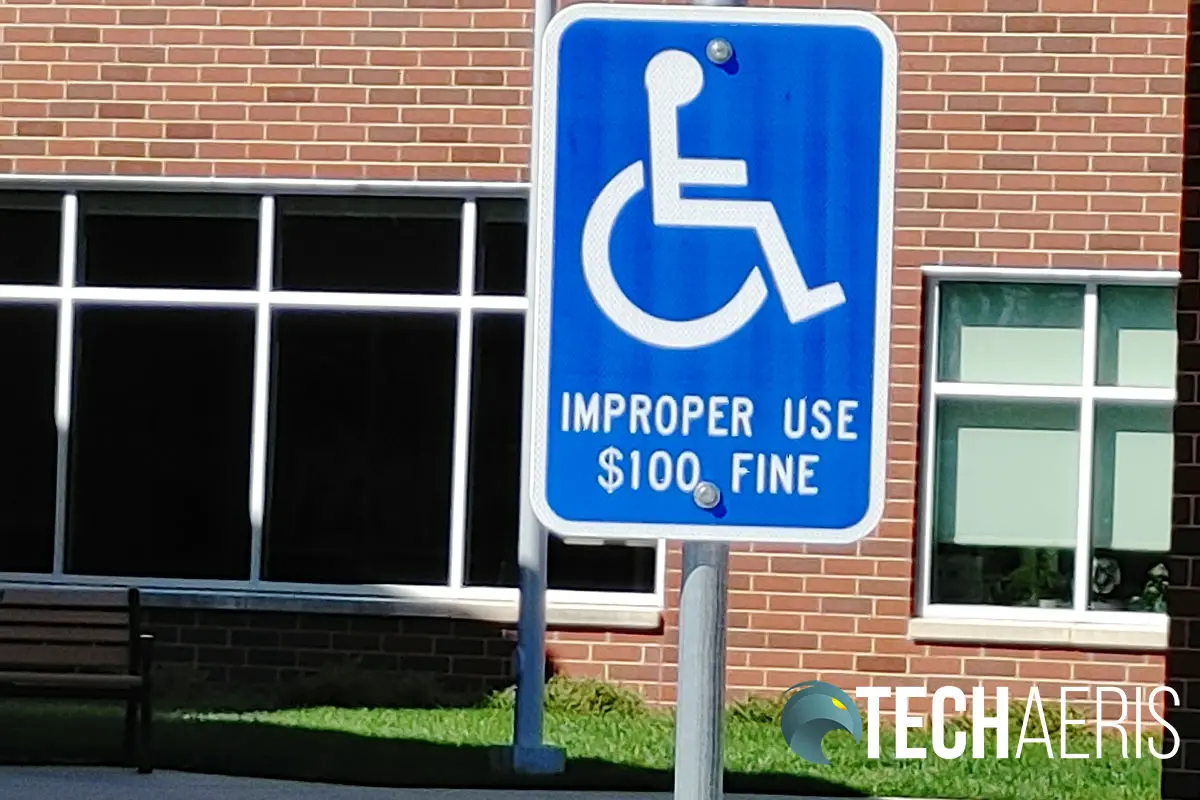
Wrap Up
I read one review of the LG V60 ThinQ 5G that described this phone as a “less exciting” Samsung Galaxy and honestly, that’s just not true. Not to take anything away from Samsung’s phones because they are amazing devices but the LG V60 ThinQ 5G is an amazing phone in its own right.
LG made some choices that other reviewers don’t agree with, and LG doesn’t hold elaborate press conferences to unveil their devices like Apple, One Plus, and Samsung. There are no press kits and swag bags, so I guess that makes the V60 ThinQ “less exciting.”
Don’t get me wrong, I’ve attended my fair share of press conferences and gotten my fair share of swag bags. Even though LG did none of that for this phone, I still think it’s worth your time to take a look at.
Not everyone is going to like the dual screen. I only found it useful for watching YouTube on one side while I went through emails on the other. It was useful to me for racing games too. But I know others who love having dual displays and that’s a great option to have if you need it. Sure the display is only FHD+ and it doesn’t have a dedicated zoom camera, but I think these are two features most users won’t miss.
There is a lot that this phone gets right. It’s comfortable in the hand, the software works well, the display is nice, it has a headphone jack, the build quality is top notch, the cameras work well for 99% of things, and the list goes on. For those who need a dual screen, this is one to check out for sure.
For US$799, I think the LG V60 ThinQ 5G dual screen is a pretty nice smartphone, and the company has made huge improvements since the last time I used an LG. I would have no problem recommending the LG V60 ThinQ 5G dual screen to anyone.
In some of our articles and especially in our reviews, you will find Amazon or other affiliate links. As Amazon Associates, we earn from qualifying purchases. Any other purchases you make through these links often result in a small amount being earned for the site and/or our writers. Techaeris often covers brand press releases. Doing this does not constitute an endorsement of any product or service by Techaeris. We provide the press release information for our audience to be informed and make their own decision on a purchase or not. Only our reviews are an endorsement or lack thereof. For more information, you can read our full disclaimer.
Last Updated on February 3, 2021.

